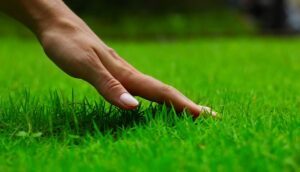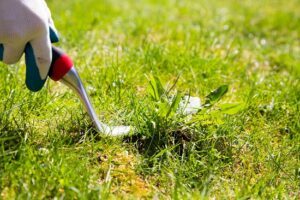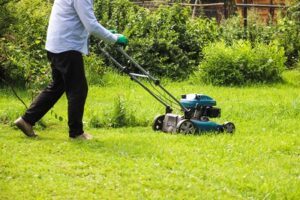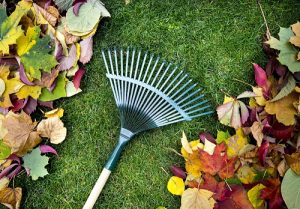 One of the many tasks included in your regular lawn care is to get rid of weeds from your lawn. There are different ways to do this and you do not have to spend more than $20. In addition to getting rid of the weed, you also need to control and prevent their growth in your yard. To help you effectively do these, here are some of the most common weed control strategies that you can consider doing.
One of the many tasks included in your regular lawn care is to get rid of weeds from your lawn. There are different ways to do this and you do not have to spend more than $20. In addition to getting rid of the weed, you also need to control and prevent their growth in your yard. To help you effectively do these, here are some of the most common weed control strategies that you can consider doing.
Maintain ideal grass height
Different types of grass have a different height requirement. Confirm with a local lawn care Myrtle Beach the ideal height for the grass that you have on your lawn. Maintaining your grass at the right height and making sure it is sufficiently fertilized and watered, will result in a healthier lawn eliminating any possibilities for weed grass to grow and develop.
Once you know how long your grass should be maintained, you can create a mowing schedule. This will depend on the type of grass you are mowing and weather conditions. At most, you will have to mow once every one to two weeks. Regular mowing not only results in maintaining the right level of grass but will also ensure that weed seed heads are clipped off before they reach maturity.
Know the specific type of weed you are dealing with
Similarly, in many situations, it helps if you get to know the weed that you’re dealing with so that you can plan the right solution and action to get rid of it. Generally, there are three types of weeds and each requires a different type of treatment. If you do not know which type of weed you have in your background, dig out a sample and bring to your local lawn maintenance expert.
- Broadleaf weeds – This type of weed has broad leaves. Examples include creeping Charlie, dandelions and clover. Broadleaf weeds can be prevented using small amounts of broadleaf herbicide. Lawn care experts suggest using the smallest applicator available in garden stores to help you save time and money. Using a small applicator also prevents the release of harmful chemicals, which are often present in herbicides, into the environment.
- Perennial grassy weeds – This type of weed has similar behavior with the average grass. It can grow dormant throughout winter and come out in the spring, along with your grass. To effectively eliminate perennial weeds, you will need to wipe a non-selective plant killer to the weeds that you want to remove. To do this effectively, dip a cloth glove in the herbicide and use this glove to touch the weeds. Make sure you wear a protective rubber glove underneath the cloth glove so you will not be affected by the herbicide. The best way to apply a generous amount of the herbicide to the weed is to grab it using the cloth glove near the roots and pull towards the ends of the leaf. Do not spray this herbicide to your lawn as this will also kill your other plants and grass.
- Annual grassy weeds – This type of weed is very much similar to the growth and behavior of crabgrass. After reseeding near the end of the growing season, they die and leave the seeds to germinate and grow in the coming spring season. Experts highly recommend using crabgrass preventer between the first and third mowing during the spring season. It is extremely important that you apply the herbicide during spring because this is when they germinate seeds.
For more information on lawn care, call Conner’s Lawn Care Service today.
Conner’s Lawn Care Service
Myrtle Beach, SC
843-504-4901
http://connerslawncare.com/
 Spring is the best time to prepare your lawn for summer. You can have a healthy, fresh lawn in the spring and enjoy the beautiful weather. With proper
Spring is the best time to prepare your lawn for summer. You can have a healthy, fresh lawn in the spring and enjoy the beautiful weather. With proper  One of the many goals of homeowners is to have the perfect lawn and landscape. It’s been just a few months since the new year started and you still have the opportunity to start anew.
One of the many goals of homeowners is to have the perfect lawn and landscape. It’s been just a few months since the new year started and you still have the opportunity to start anew.  Spring is marked by the return of the first crocuses and daffodils. These signs are also a sign that your lawn is ready for the growing season. These
Spring is marked by the return of the first crocuses and daffodils. These signs are also a sign that your lawn is ready for the growing season. These  Overseed
Overseed When you’ve done everything from watering, weeding, down to edging but still can’t get the lawn that you want, you must be doing something wrong. Check out the most common
When you’ve done everything from watering, weeding, down to edging but still can’t get the lawn that you want, you must be doing something wrong. Check out the most common  It is a widely known truth that the best method to make sure a thick, green, healthy and balanced lawn in the spring is to give it some well-timed care in the winter — in other words, right now. However, according to
It is a widely known truth that the best method to make sure a thick, green, healthy and balanced lawn in the spring is to give it some well-timed care in the winter — in other words, right now. However, according to  Every homeowner loves having beautiful landscaping, lawn, trees, etc. However, most will admit that while they want the beautiful results of a gorgeous yard, they don’t have the time to create it and/or maintain it. If your idea of fun after work or on the weekends does not involve weeding and planting, then this article is for you! Enter the professional landscaper or
Every homeowner loves having beautiful landscaping, lawn, trees, etc. However, most will admit that while they want the beautiful results of a gorgeous yard, they don’t have the time to create it and/or maintain it. If your idea of fun after work or on the weekends does not involve weeding and planting, then this article is for you! Enter the professional landscaper or  Regular
Regular  Taking care of your lawn can be a daunting task. Keeping lawn in excellent condition needs cutting, trimming, feeding, and even avoiding or treating problems. If you do not have the time for such tasks, it is better left to
Taking care of your lawn can be a daunting task. Keeping lawn in excellent condition needs cutting, trimming, feeding, and even avoiding or treating problems. If you do not have the time for such tasks, it is better left to  The weather has been warm, but, it won’t last forever. Your lawn doesn’t need as much attention in winter as it does during summer, fall, and spring. However, it should still be taken care of and now is the time for winter
The weather has been warm, but, it won’t last forever. Your lawn doesn’t need as much attention in winter as it does during summer, fall, and spring. However, it should still be taken care of and now is the time for winter